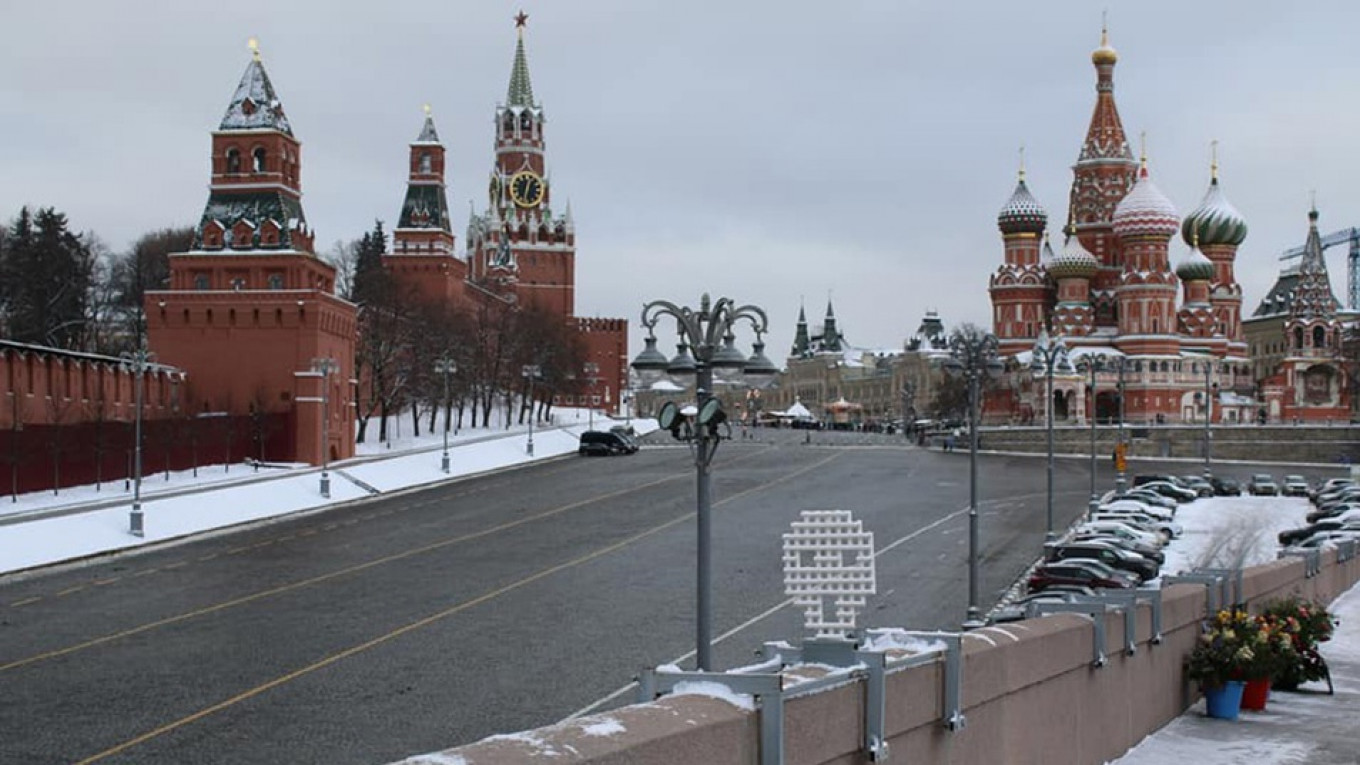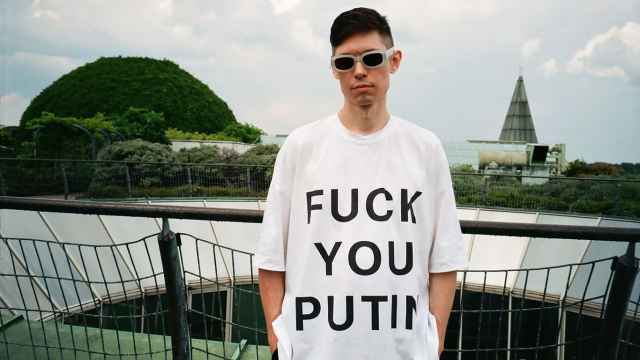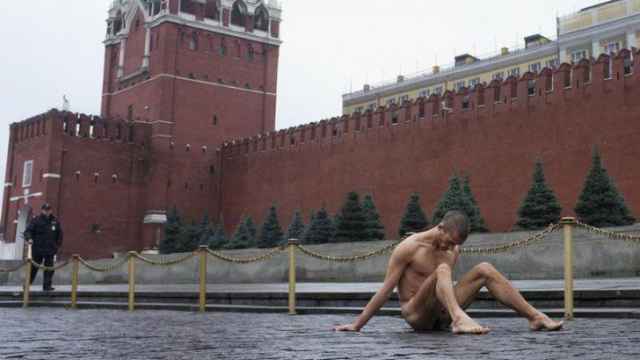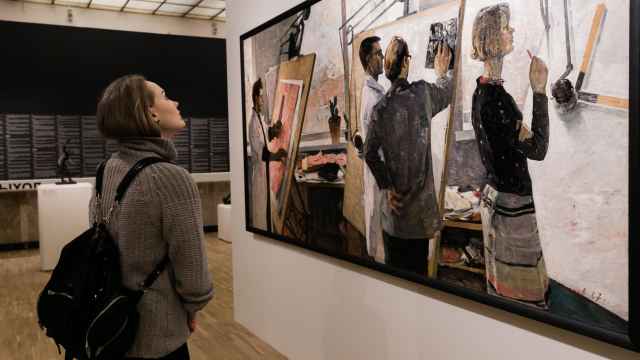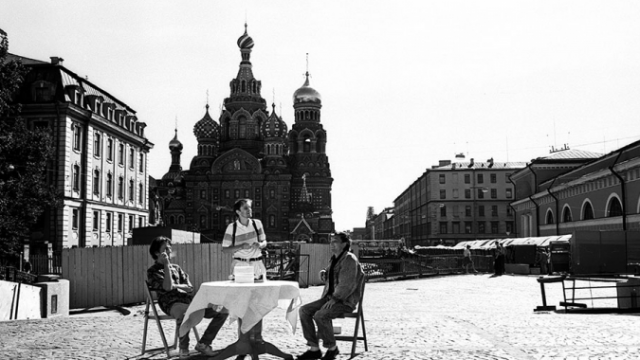There is a new addition to the memorial to Boris Nemtsov on the Moskvoretsky Bridge where he was killed: a sculptural version of Edvard Munch’s “The Scream.” This metal grid “scream” hovering over the wall of the bridge was made and installed by Konstantin Benkovich, a young artist who likes to challenge the status quo in the contemporary art world.
Benkovich doesn’t work with innovative techniques, expensive supplies, a large production team or investor funds. He works alone with simple and cheap materials.
The 37-year-old artist from St Petersburg studied at the St Petersburg Stieglitz State Academy of Art and Design, whose graduates are renowned for the decorative elegance. Benkovich uses homelier materials, especially steel grids, which he considers a symbol of the absence of freedom in Russia.
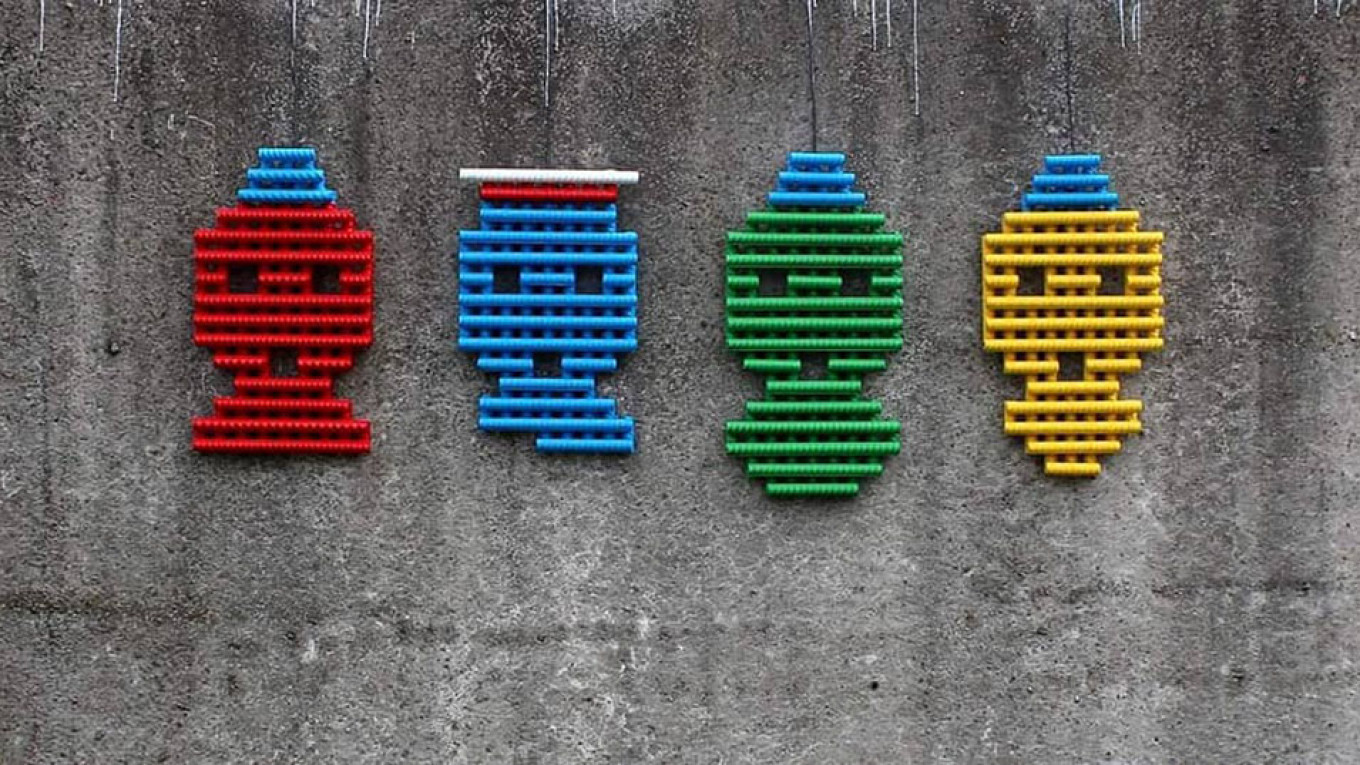
Examples of his creations include a portrait of Pyotr Pavlensky, the Russian political protest artist famous for nailing his scrotum to Red Square and setting fire to a door of the former Soviet KGB headquarters; and Pacman, which appeared as the artist´s response to the Russian financial crisis of 2014-17.
At the end of 2017, Benkovich participated in the group exhibition “Art Riot: Post-Soviet Activism and Inside Pussy Riot” at the Saatchi Art Gallery in London along works by Pussy Riot and other well-known Russian artists.
The Moscow Times caught up with Benkovich to ask him about his work.
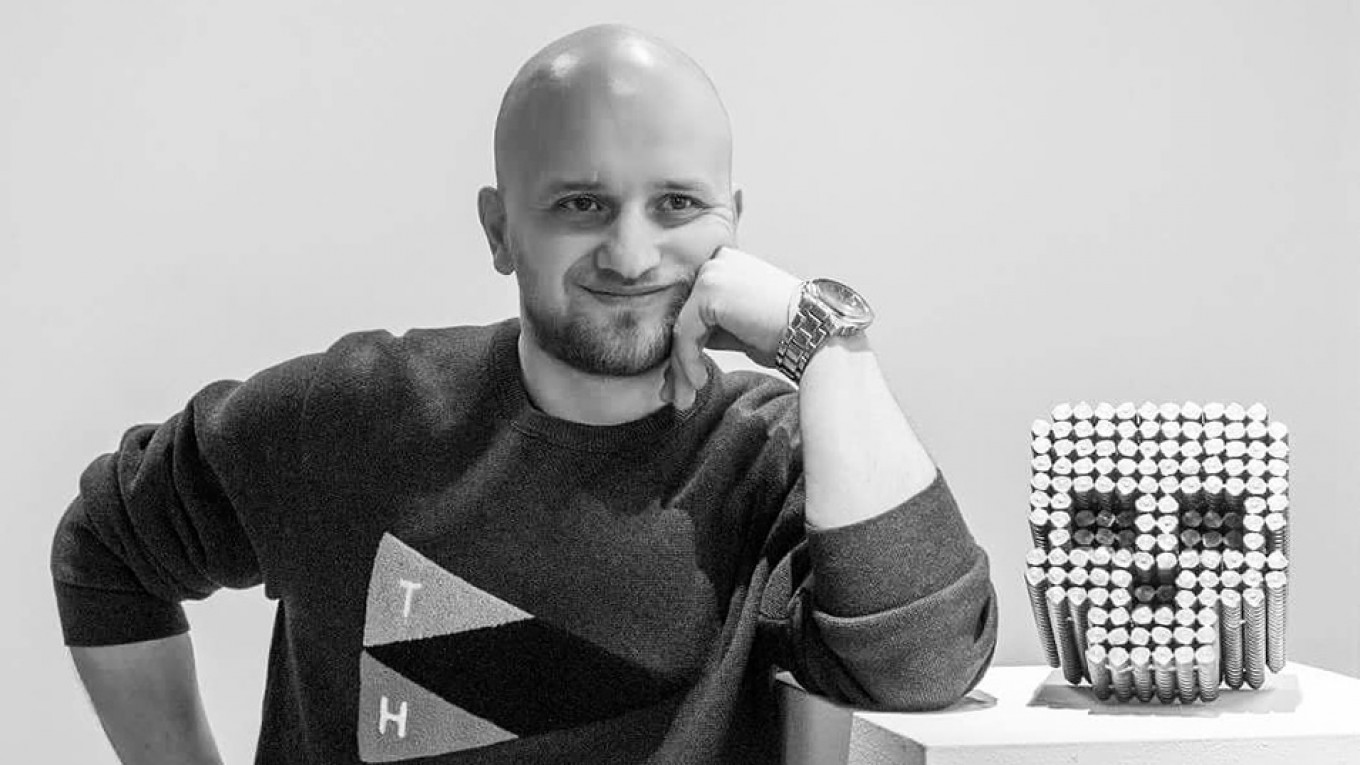
Q: Your latest creation is called “The Scream." Tell us about it.
A: The death of Boris Nemtsov was a great loss for all who hoped to see Russia as a free and democratic country. He was a person who could lead the country into a democratic future, but he was demonstratively killed near Red Square. My work is based on one of Edvard Munch's works called "The Scream." I visited the Munch Museum in Oslo, where I was really struck by the artist's ability to reflect a variety of emotions, whether it was horror, fear, pain, or numbness in people's faces. Like I do often in my works, I took a well-known character from mass culture, changed the context and meaning of the work, and welded the screaming face behind a steel grid. I then installed the work on the Bolshoi Moskvoretsky Bridge next to the memorial dedicated to Boris Nemtsov.
Q: You decided to display your artwork in a public place without authorization. Aren’t you afraid of consequences?
A: Street art is the most democratic form of art. I rarely display my works on the street, but if I decide to, it’s carefully chosen and meaningful. No, I was not at all afraid of the consequences. I did not destroy anything or offend anyone's feelings, but I realize that the reason for the persecution may be completely different — maybe political.
Q: How do you see yourself as an artist?
A: I am an artist who follows his instincts. Things that deeply touch me turn into inspiration. I am very sensitive to injustice and the pain of others. At the same time, my language consists of the symbols of pop culture. I change the context and sometimes even completely change the meaning of images I borrow from other artists. Putin-supporters dislike and criticize my work. But I don’t care. I will always be on the side of the weak and never on the side of the ruling elite.
Q: Who inspires you in your work?
A: Jasper Johns inspires me. He’s an American painter, sculptor and printmaker whose work is associated with abstract expressionism, Neo-Dadaism, and pop art. Johns is famous for his depictions of the American flag. One work I did in 2015 is in homage to Jasper Johns. I drew a Russian flag and thought that if I weld it onto metal gridwork, it would perfectly describe the situation in the country. After that I decided to go through all symbols of the Russian state — stars, eagles and various other attributes of power. I was especially inspired by the Russian coat of arms. Eagles, including two-headed ones, are present in the coats of arms of many countries, and two-headed eagles are always in the countries that somehow lay claim to being successors of the first Rome, the one on the Tiber. For example: Austria (a fragment of the Holy Roman Empire); tiny Montenegro; and huge Russia. So I decided to create a huge double-headed eagle. The work was part of the “Uniform” exhibition displayed in the Dukley European Art Community in Montenegro in 2016. Another contemporary artist and activist who inspires me is Ai Weiwei. All his works are socially astute and uncompromising. My dream is to collaborate with him.
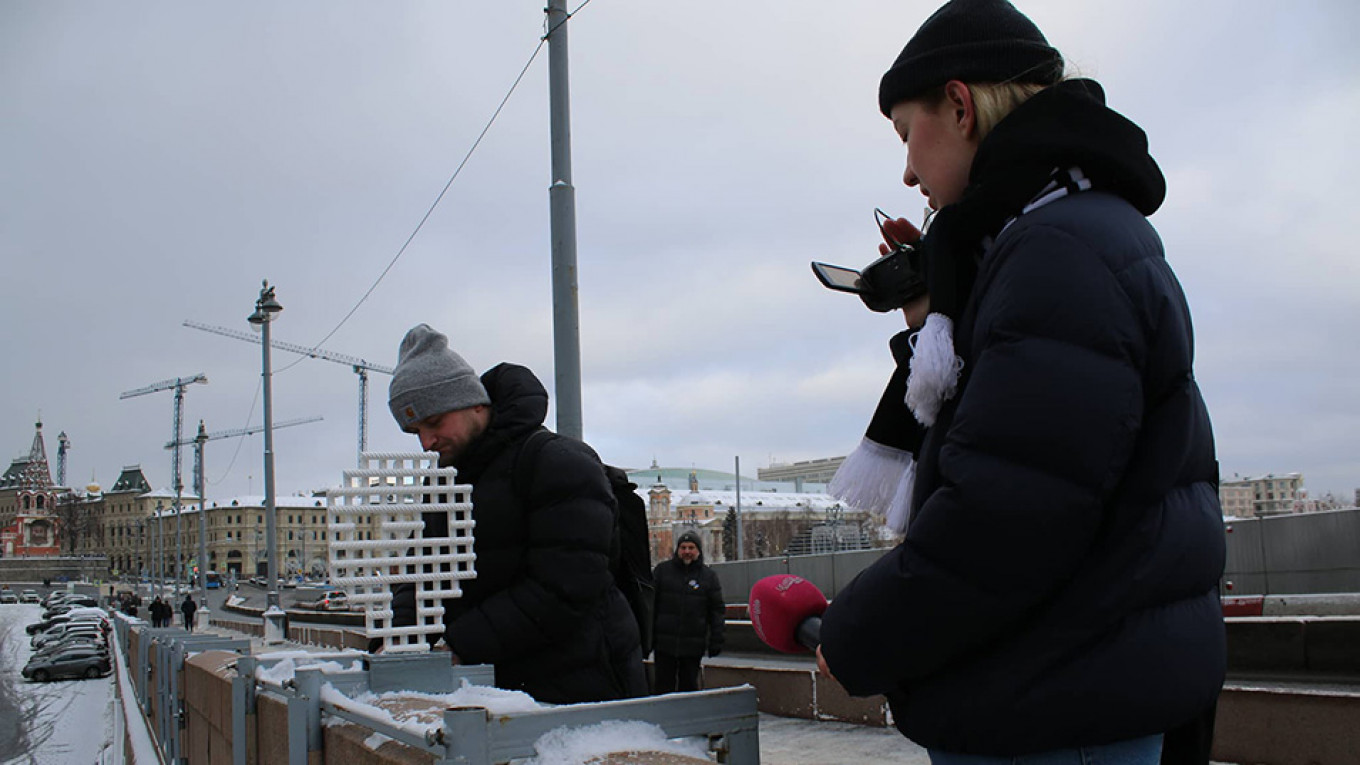
Q: A constantly recurring symbol in your work is the steel grid. Why?
A: The steel grid is a visible sign of the absence of freedom in Russia and therefore one of my favorite objects. In Russia steel is used to make bars in prisons, to create grids for windows of residential houses, to make fences around graves, etc. Steel is a coded material that carries lots of information.
Q: What are your plans for the future, and what are you working on now?
A: I met with Kirill Serebrennikov, head of the Gogol Center, a month before the absurd legal case was started against him. At that time the police had raided the theater, and he suggested that I do a project about it. But it all broke down and ceased to be important after the unfair and contrived persecution of him began. Any sane person in Russia understands how easy it is for the government to organize a politically motivated case and then put the person in jail.Now I am working simultaneously on several projects. One is about Kirill Serebrennikov. For now, I am happy that several collectors are buying my works, which gives me the opportunity to experiment further.
A Message from The Moscow Times:
Dear readers,
We are facing unprecedented challenges. Russia's Prosecutor General's Office has designated The Moscow Times as an "undesirable" organization, criminalizing our work and putting our staff at risk of prosecution. This follows our earlier unjust labeling as a "foreign agent."
These actions are direct attempts to silence independent journalism in Russia. The authorities claim our work "discredits the decisions of the Russian leadership." We see things differently: we strive to provide accurate, unbiased reporting on Russia.
We, the journalists of The Moscow Times, refuse to be silenced. But to continue our work, we need your help.
Your support, no matter how small, makes a world of difference. If you can, please support us monthly starting from just $2. It's quick to set up, and every contribution makes a significant impact.
By supporting The Moscow Times, you're defending open, independent journalism in the face of repression. Thank you for standing with us.
Remind me later.


